–








–
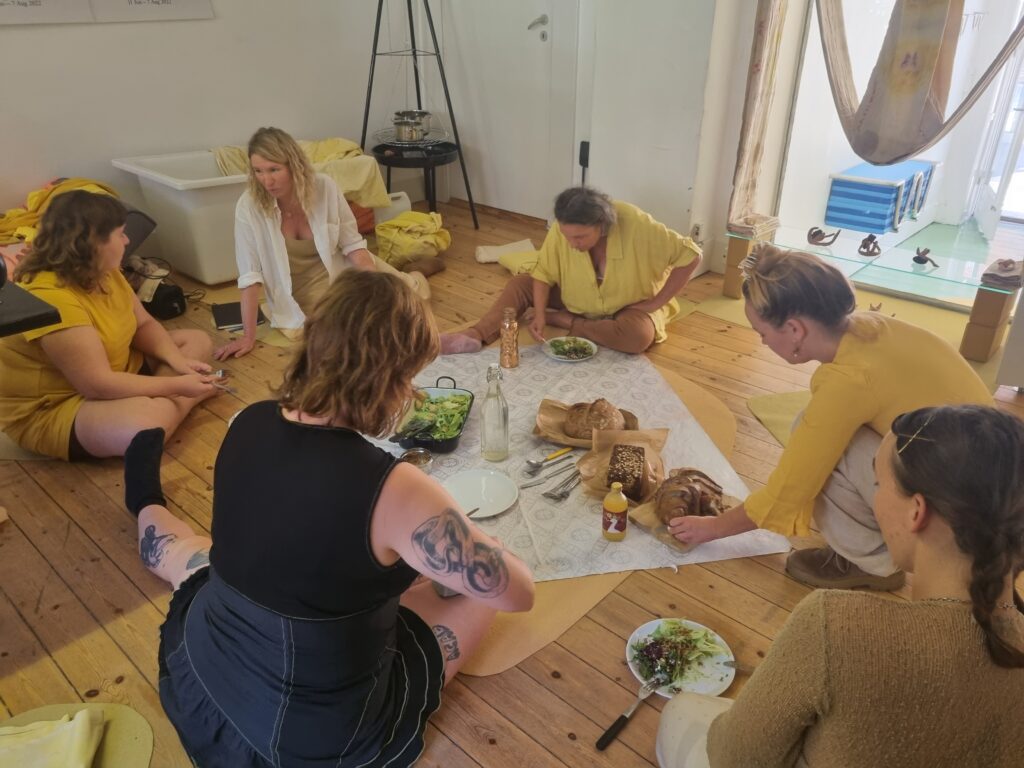



–
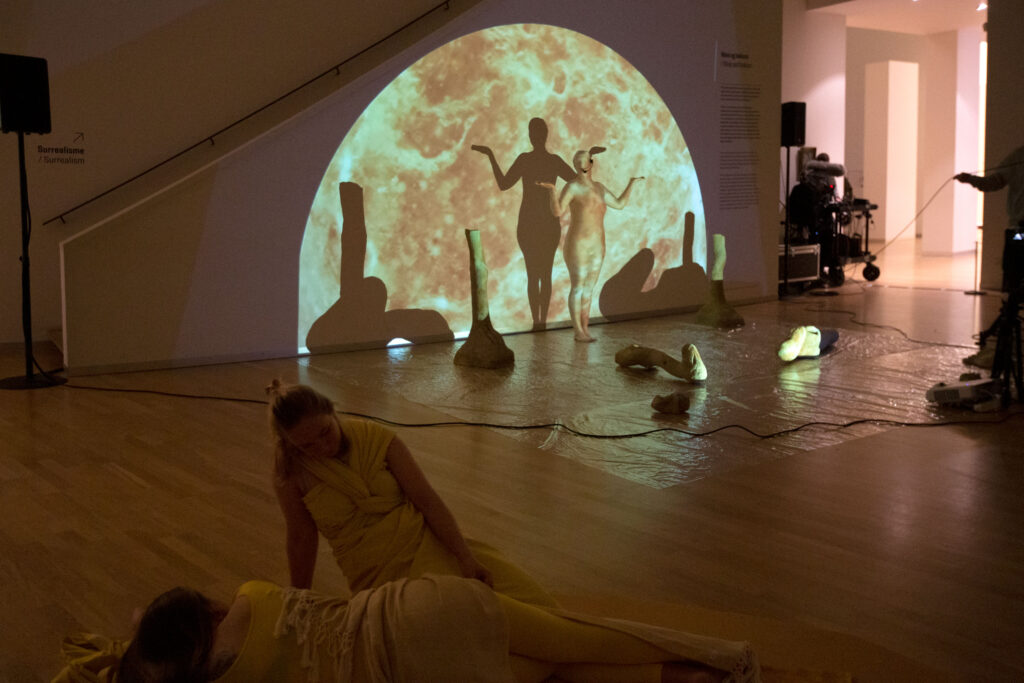



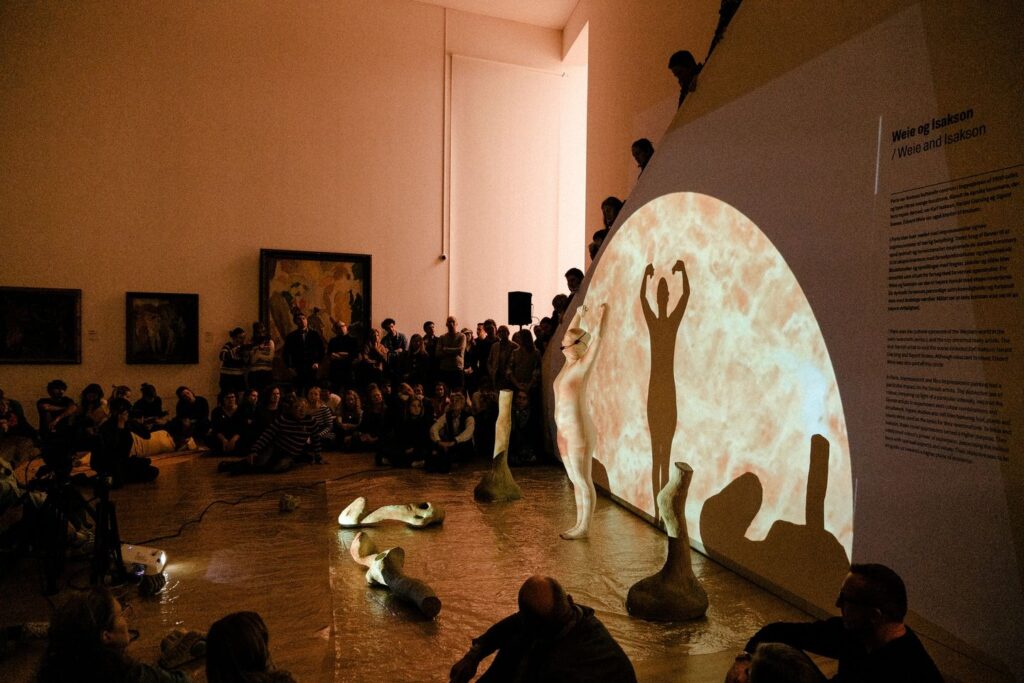
(Photo: Fahad Saeed)
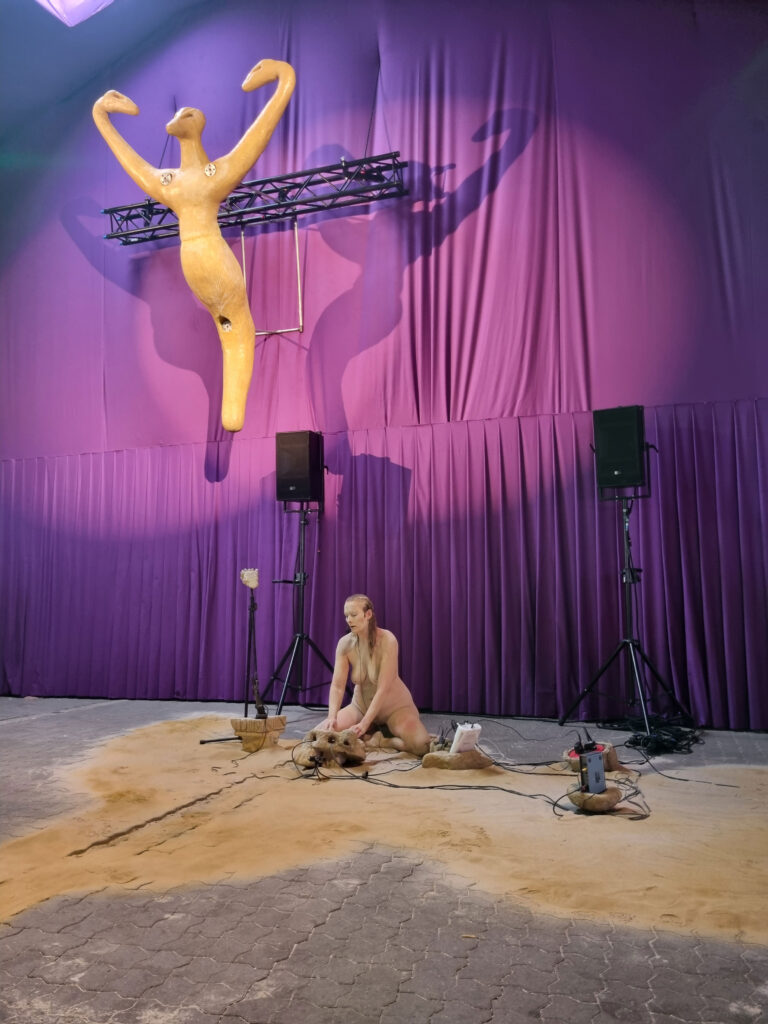
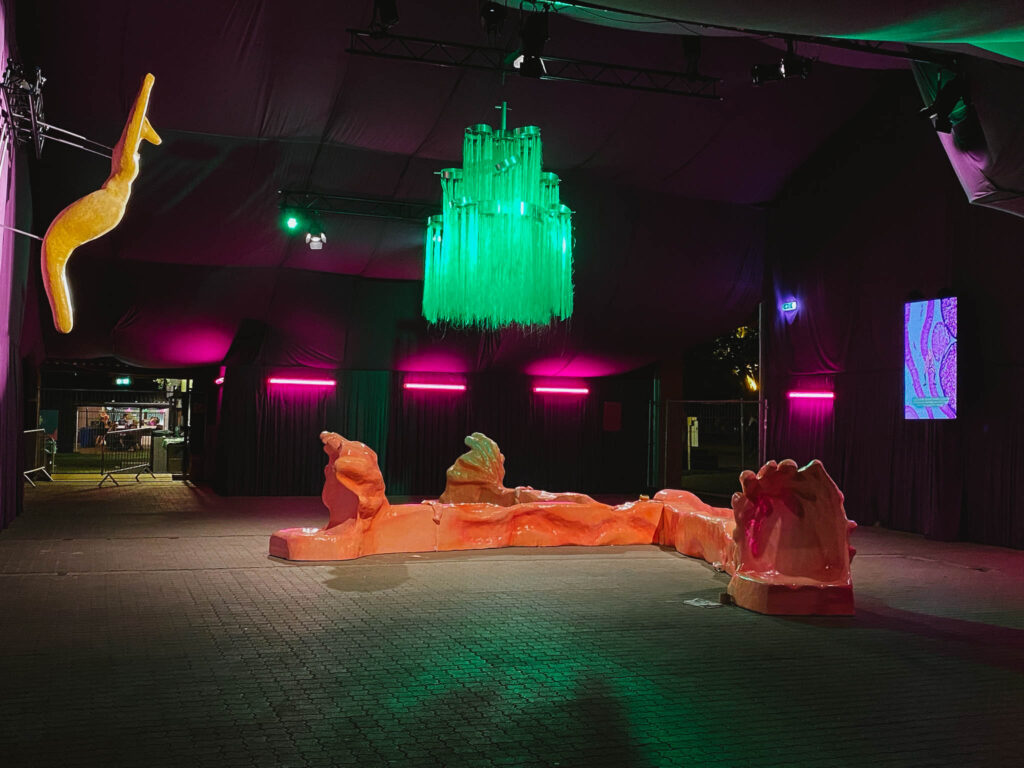
Welcome to the Womb, Tabita Rezaire, Nanna Lysholt Hansen, Anna Aagaard og Sahar Jamili
Gloria Foyer, curateret by Ida Schyum, Roskilde Festival, 2022 (photo: Ida Schyum)
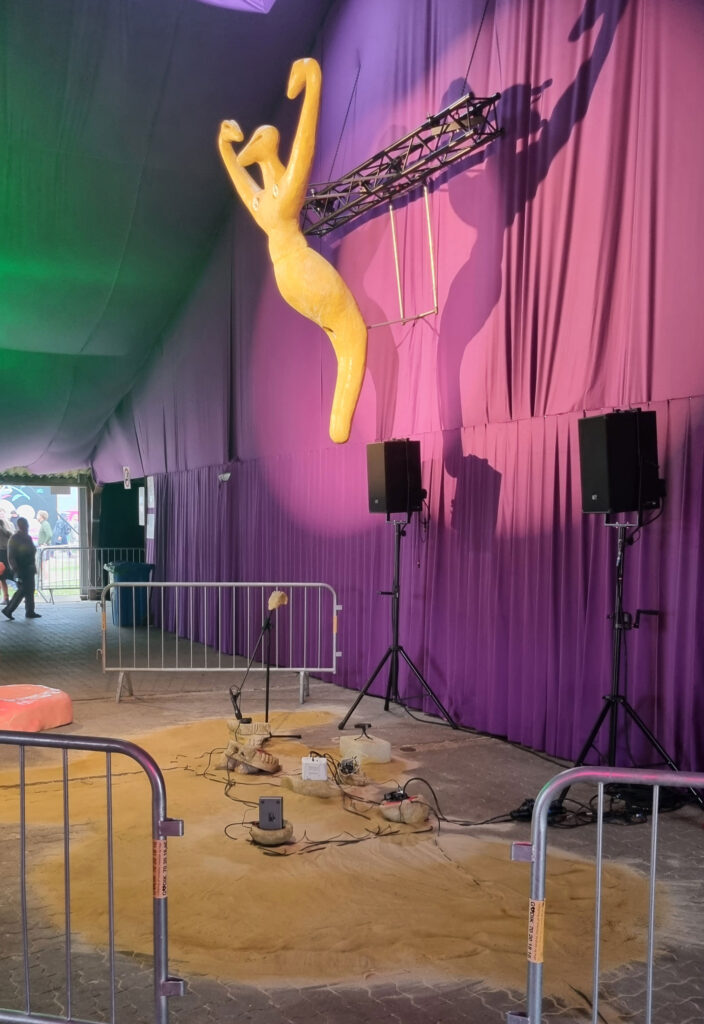

The project Dear Daughter consists of a series of voice-based live performances, video documents and performative speech installations. In these works, I interweave my own experiences and thoughts on crucial elements in female life -such as pregnancy, birth, mothering and female sexuality- with text fragments from feminist literary sources. I then perform the text collages through hybrid technological forms.
Dear Daughter/Sen_sing_inannainanna (Russ, Shiva, Klein), 2019-, is an eco-feminist sci-fi film in where I perform as a ‘cyborg mother goddess’ travelling through space and time, while singing a text about ecosystems, environmental justice, feminist ancient pasts and technological futures to come.
Dear Daughter/Sen_sing_inannainanna (Russ, Shiva, Klein) is made in collaboration with my daugher and my daughter’s father, the artist Stathis Tsemberlidis
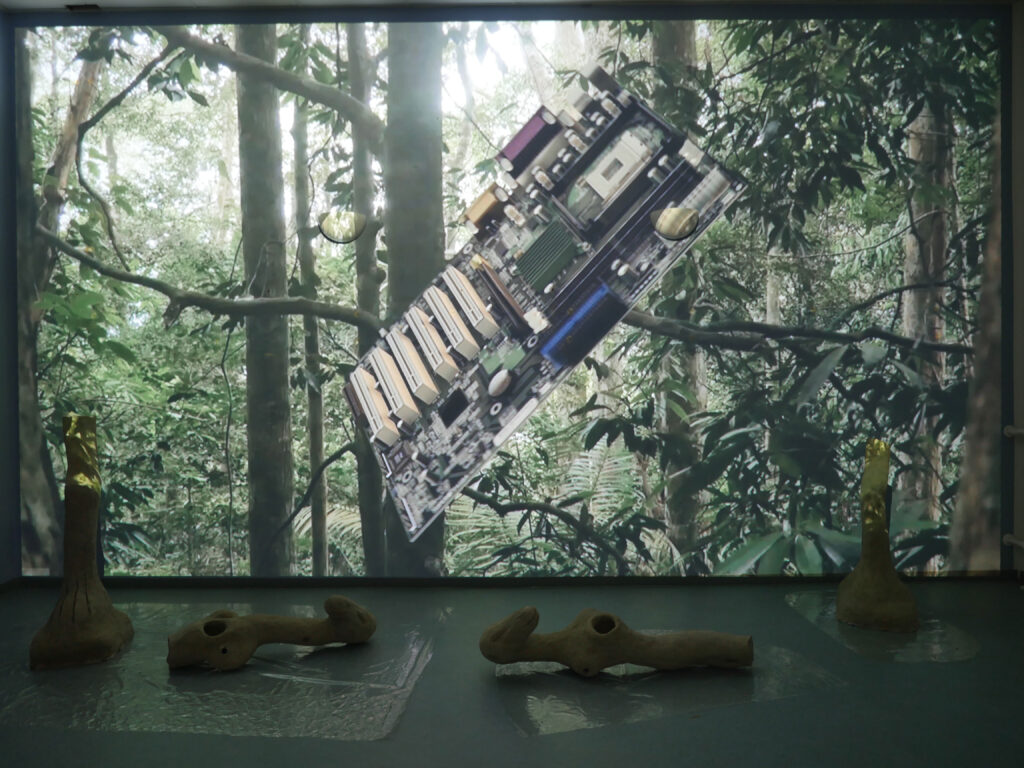

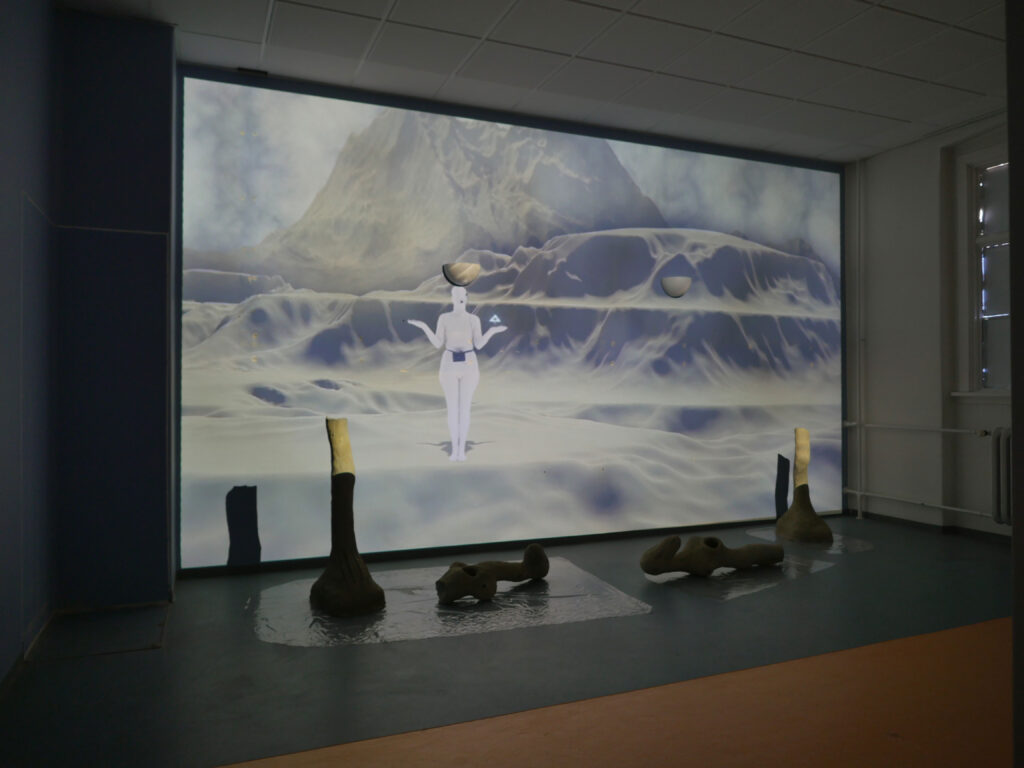

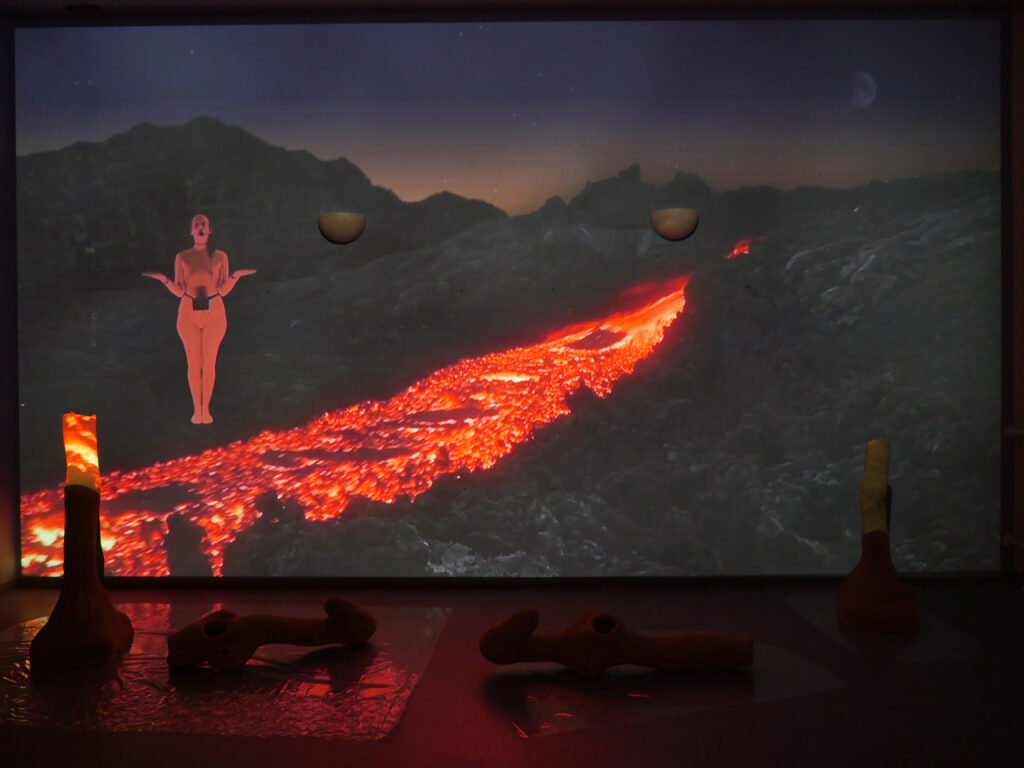

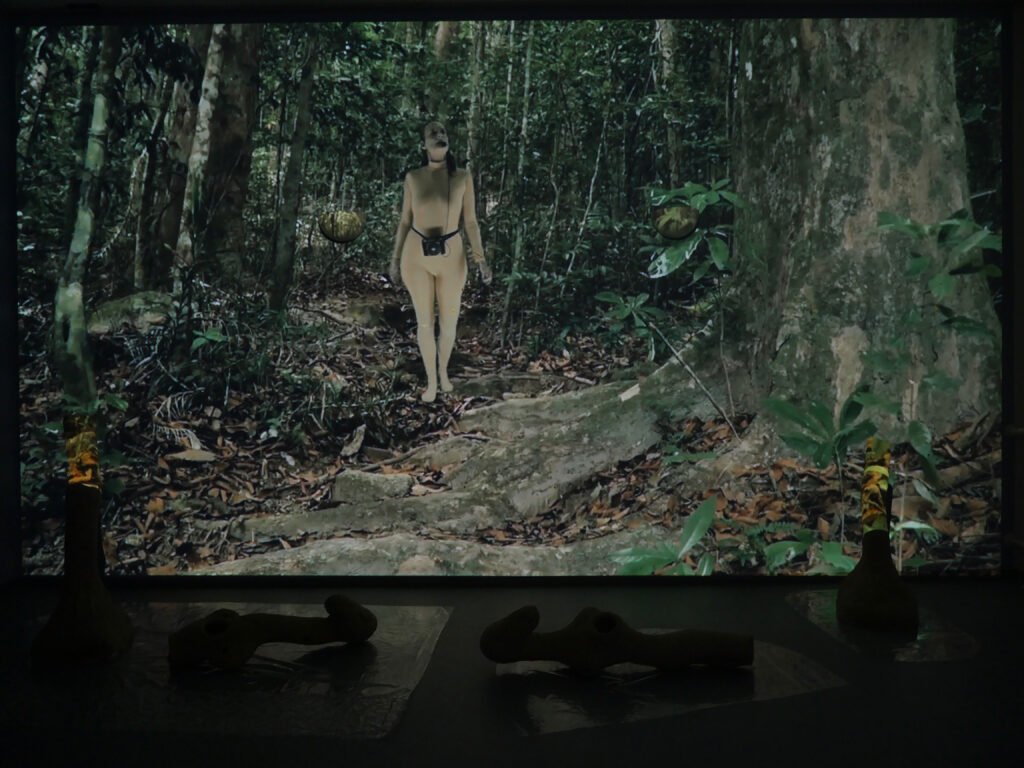
Dear Daughter/Sen_sing_inannainanna (Russ, Shiva, Klein), 2021
25’52” HDV, sound, synth felt, PVC, beton clay
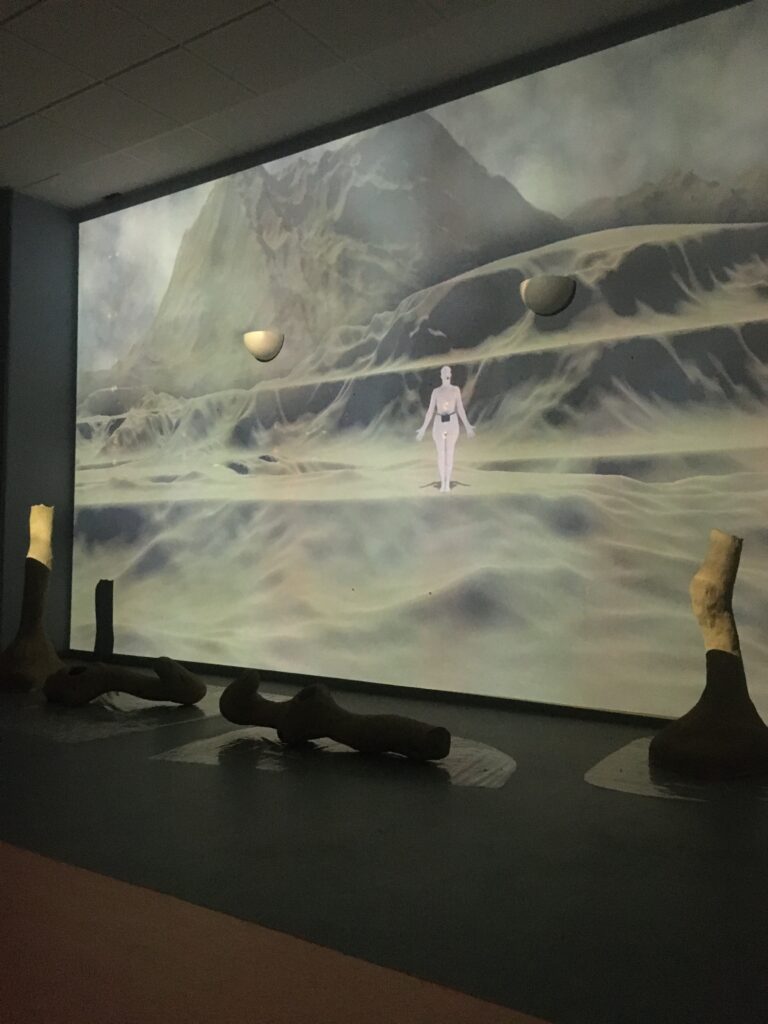
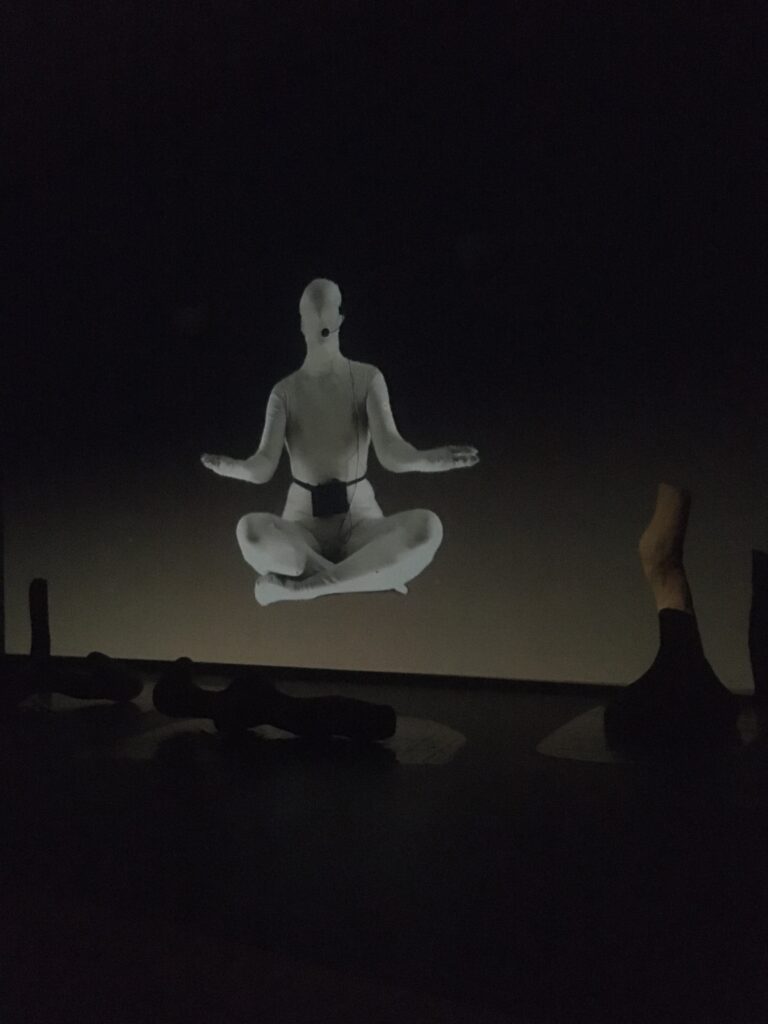
Dear Daughter/Sen_sing_inannainanna (Russ, Shiva, Klein), 2021
25’52” HDV, sound, synth felt, PVC, beton clay
Nanna Lysholt Hansen & Stathis Tsemberlidis, Dear Daughter/Sen_sing_inannainanna (Russ, Shiva, Klein), 2021, 25’52” HDV, sound
The project seeks to confront the interconnected pandemic, ecological, and economic crises, by utilizing imaginative and utopian strategies as initial points of departure. Lysholt Hansen is particularly interested in exploring the moods, feelings, and needs necessary for the creation of sustainable futures. Through embodying a cyborg mother goddess, the artist invokes sci-fi and speculative fiction motifs combined with vivid references such as the Sumerian poet Enheduanna and NASA recordings of the planet Venus, to meditative gestures and her own vocal presence. By positioning the body and voice as tools of resistance, via eco-feminist questions related to solidarity, care, family, and community, Lysholt Hansen asks – how can we more clearly listen and live together in times of crisis and in the future?
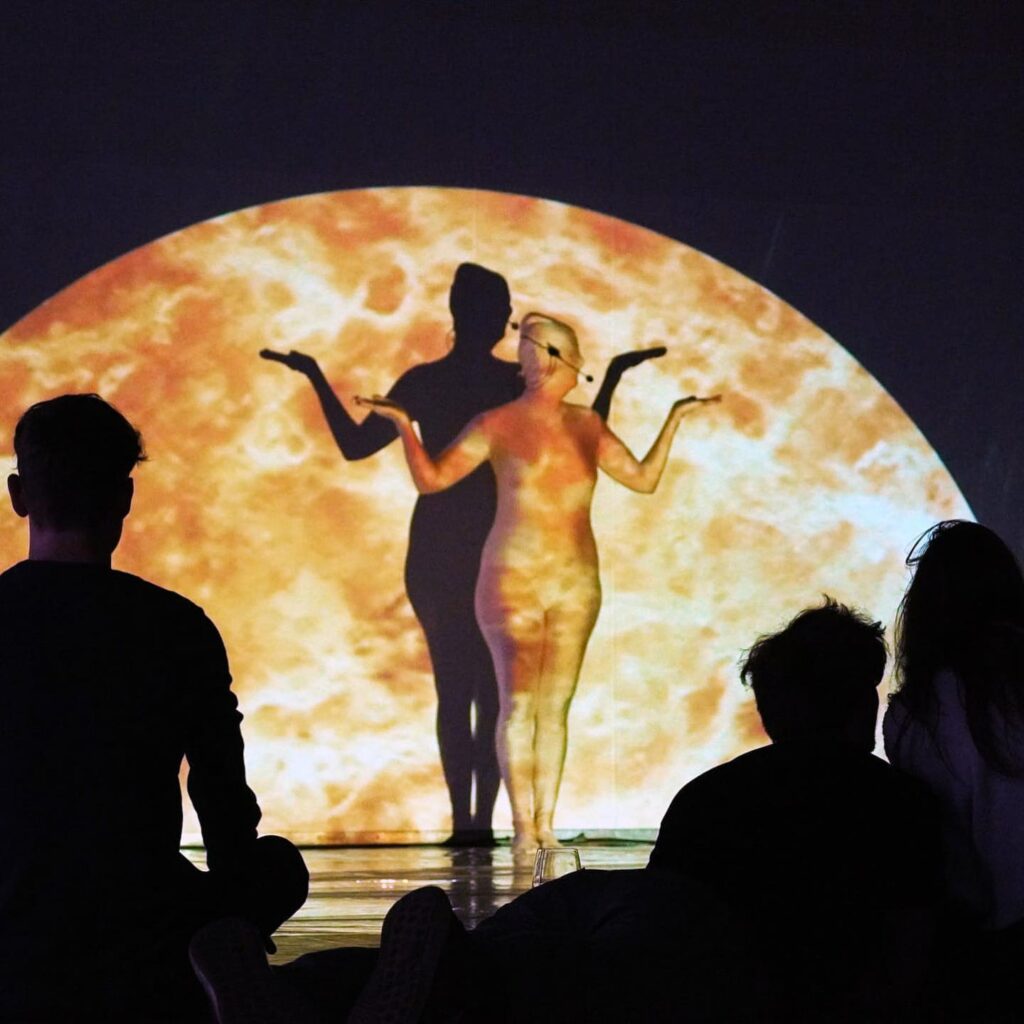



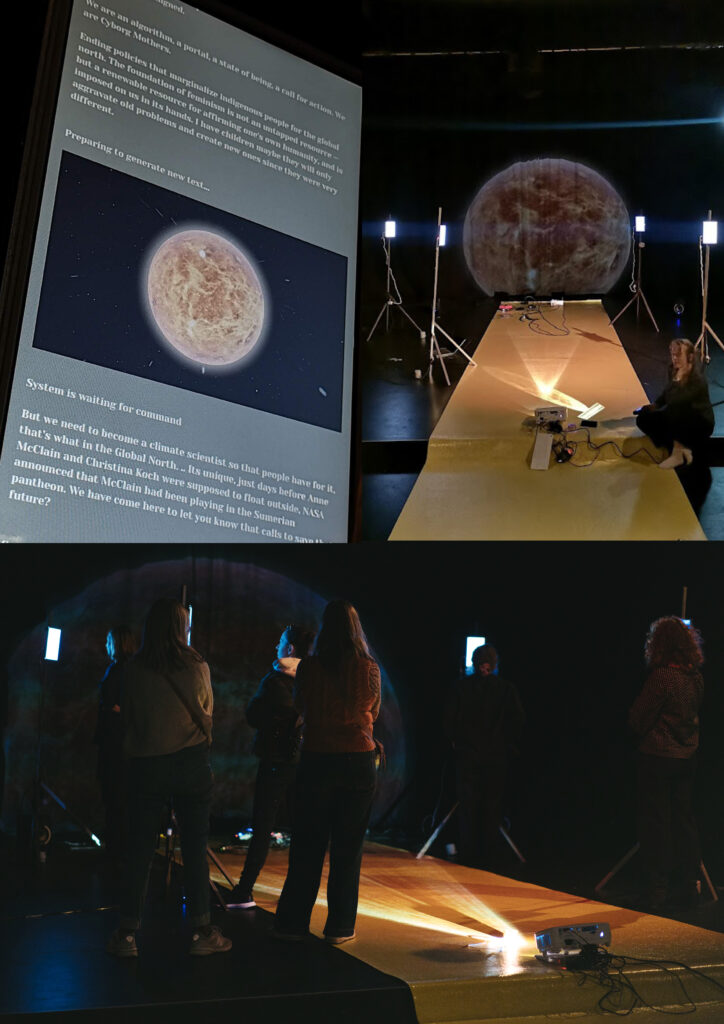
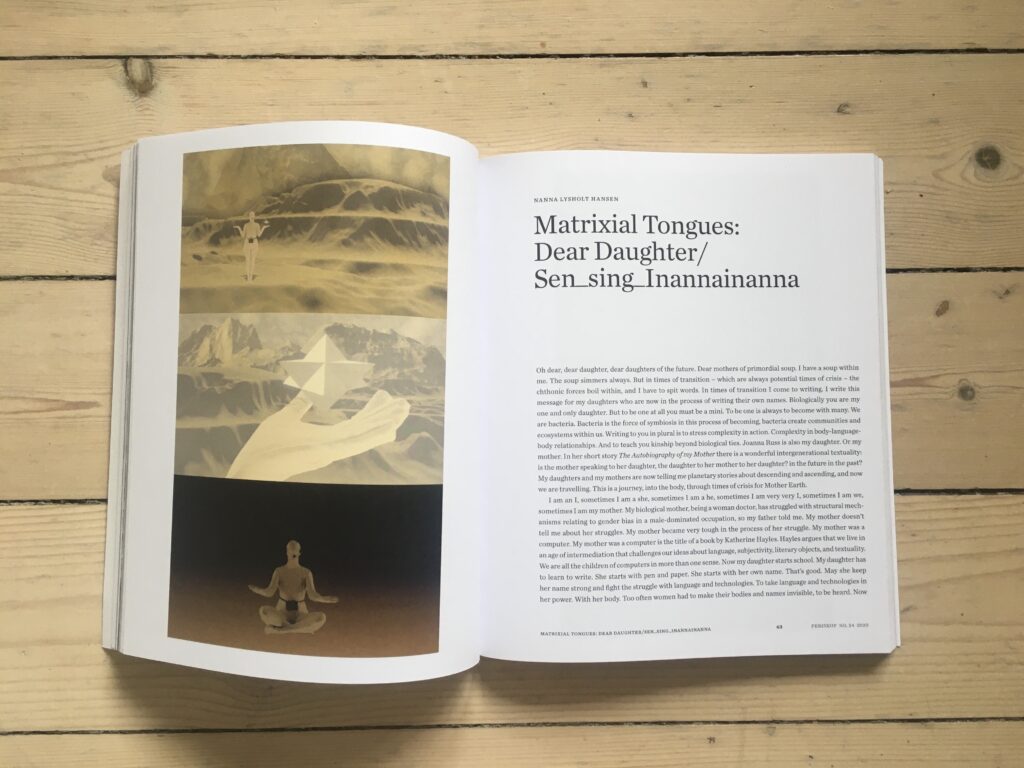
The special issue of the Periskop is dedicated to artistic research as an unruly field, between disciplines and becoming. The special issue came into being during a pandemic, as planetary cracks deepen and social injustices, structural and systemic discriminations, inequalities, climate disasters, displacements, and wars continue to unsettle our present. This special issue asks: How can we reclaim artistic research? And how are artistic research practices engaging in the co-creation of other worlds in response to different forms of social crises and planetary destruction?The special issue is compiled of various voices, practices, and propositions that each draws different trajectories and avenues for artistic research as a field that is in a continuous process of becoming, with contributions by Julie Edel Hardenberg, Imayna Caceres, Lisa Nyberg, Nanna Lysholt Hansen, Christian Danielewitz, Maria Finn, Christina Marie Jespersen, Sofie Volquartz Lebech, Mia Line, Gry Worre Hallberg, Helen Eriksen, Gry Ulrichsen & Zahra Bayati.The special issue journal is edited by Katrine Dirckinck-Holmfeld, Camilla Graff Junior, Lise Margrethe Jørgensen & Charlotte Hauch.Art work by Julie Edel Hardenberg
For more info about the journal: https://tidsskrift.dk/periskop/issue/view/8920
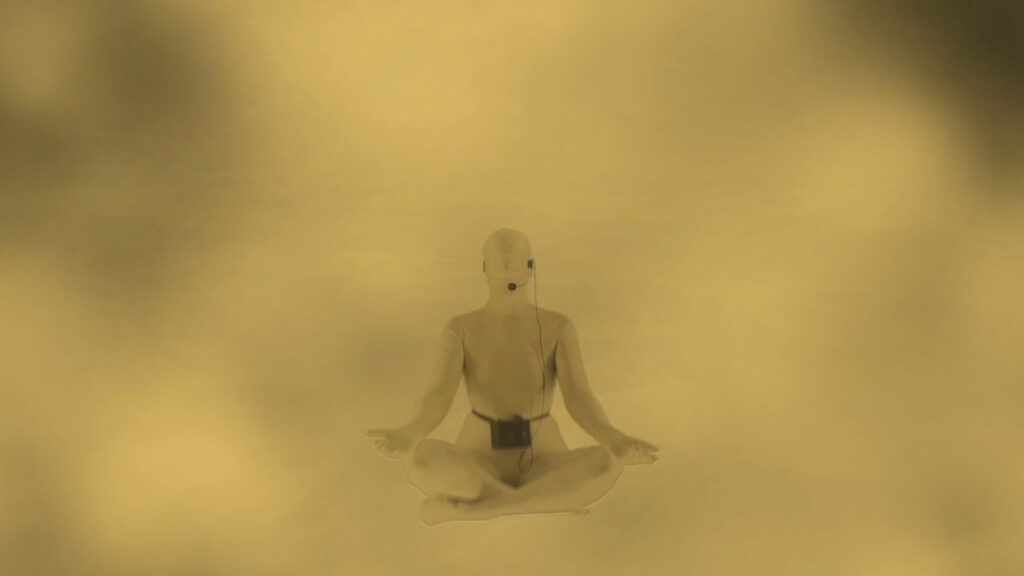
collaboration with video artist Stathis Tsemberlidis, 25’52” HDV, sound
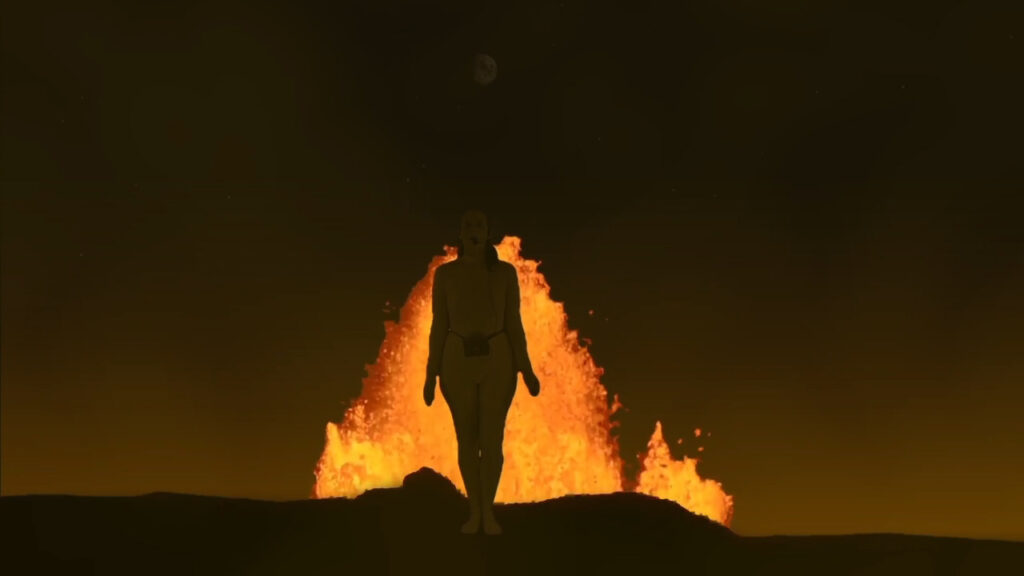





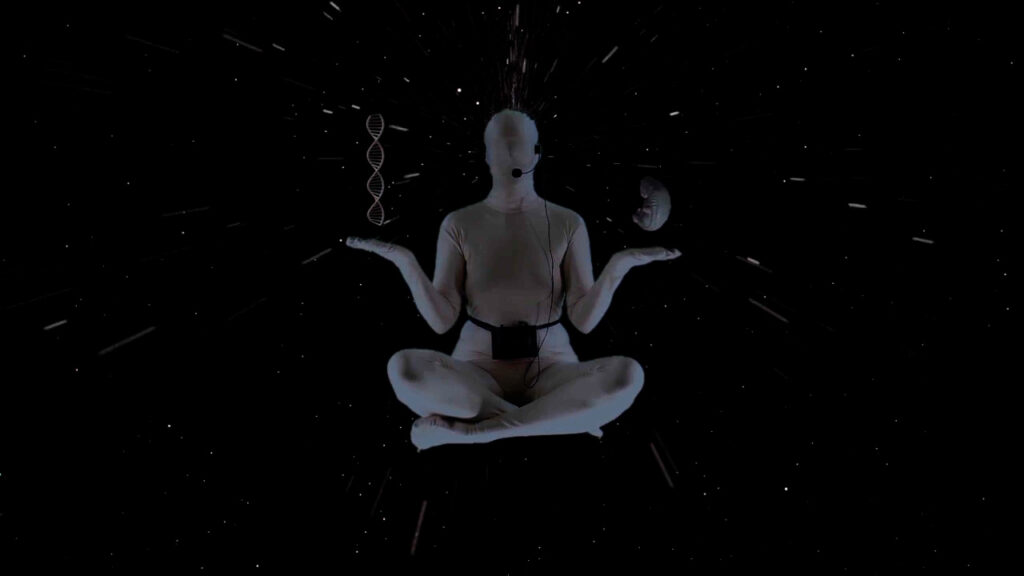
collaboration with video artist Stathis Tsemberlidis, 25’52” HDV, sound
https://vimeo.com/355939140
Værket tager udgangspunkt i oldtidsmytologi, (cyborg)modergudinder og øko-feministisk sci-fi, og er en rejse ind i kroppens biologi, psykologi og teknologi. Det er et dyk ned i psykens og fortidens underverden og en raket-tanke ud i det ydre rum hvor oldtidsgudinden inanna (gen)besøger planeten jorden og planeten Venus i fjern fortid og i fremtiden., men tid og rum forbliver cirkulært så tider faktisk ikke er at skelne. Dette tidslige aspekt understreges af, at jeg i værket performer min tekstcollage Dear Daughter Dear Mother i messende mantrasang. Det er et værk om krisetider. Krisetid for moderen. krisetid for planeten jorden. Men også med fokus på krisers transformerende potentiale. I teksten, der synges bruger jeg tekstfragmenter fra udvalgte -for mig helende, omsorgsfulde, politiske- formødre (i denne tekst Vandana Shiva, Joanna Russ, Naomi Klein og Enheduanna) samt egne erfaringer med det at mødre (i denne tekst ved blandt andet at lade min 5 årige datters stemme komme til orde) til at skabe et slags langdigt om bæredygtighed, moderskab og teknologi. We need to make-with, become-with, the earth bound (Haraway)
Værket er første kollaboration med min samlever gennem snart 20 år, kunstner og medforælder Stathis Tsemberlidis.
Tak til Vasilia Tsemperlidou Lysholt Hansen for inspiration, tekst og make-up design.
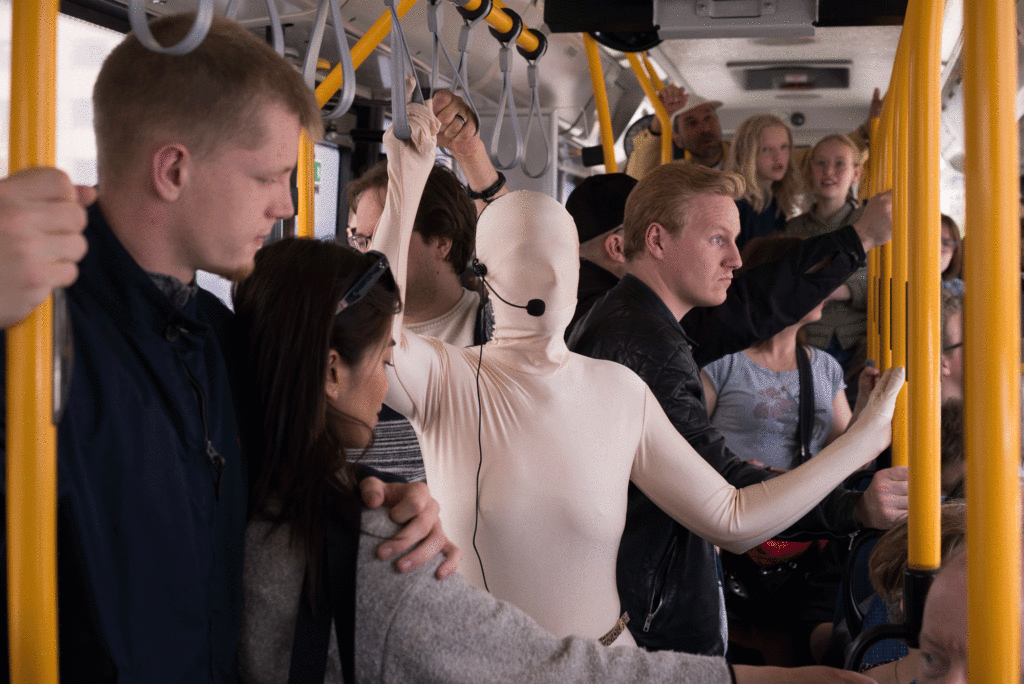
The first version of the text Dear Daughter/Sen_sing_inannainanna (Russ, Shiva, Klein) (2019), was written to be performed (through improvisational, meditative, singing voice) in a public bus connecting two institutions of art in Copenhagen: The museum Glyptoteket, with its collection of art and archeological objects encompassing a time span of 6000 years, and the art center Copenhagen Contemporary, that exhibit contemporary art. The text was written specifically for this journey, but also for travelling in a broader sense – space travelling, mind travelling, time travelling. On the public bus, I was wearing a full body suit, a sound amplifier around my waist, and a microphone headset. Circulating between the two art institutions for a duration of six hours, I was continuously singing my text to a playback of the ambient sound generated by the planet Venus in space (electromagnetic waves translated into sound by NASA), which was emitted from the small amplifier around my waist, creating a meditative space in the midst of everyday humdrum of getting from point A to point B in a public transportation vehicle. Although the performance was announced in the program of the Copenhagen Art Week Festival, it was difficult for festival attendees to locate the work, since it circulated in public transportation. It was thus mostly experienced in fragments by passers-by, who might have been puzzled by the alien voice/body challenging social codes of conduct in public space.
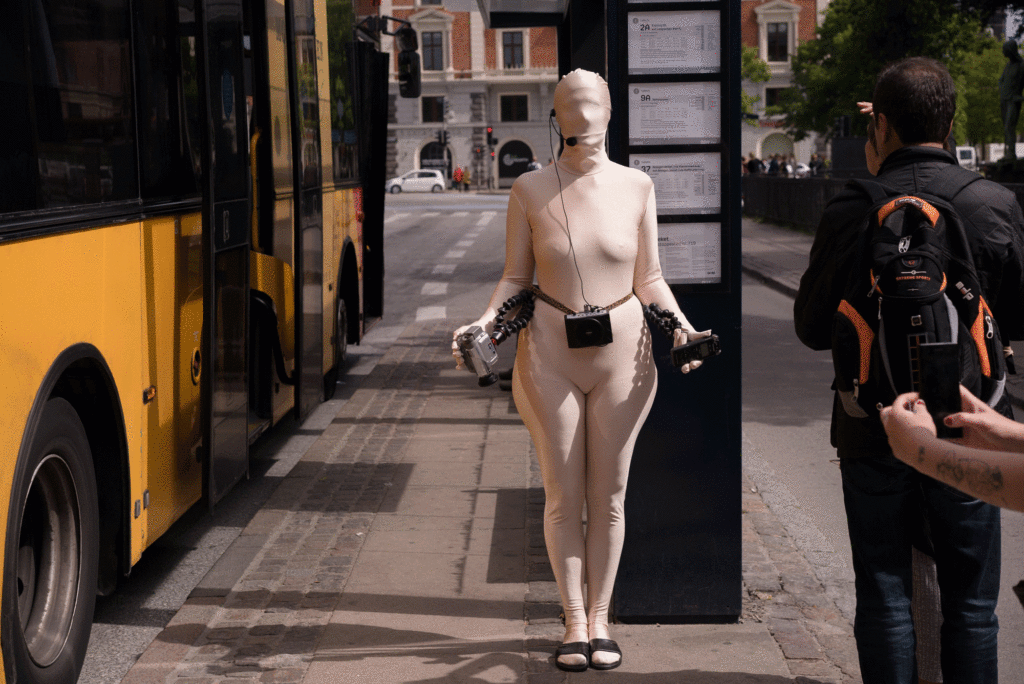



6 hours live performance in public space/bus 9A, Copenhagen, commissioned by Copenhagen Contemporary Art Centre and Glyptoteket in connection with Art Week Copenhagen 2019
–
